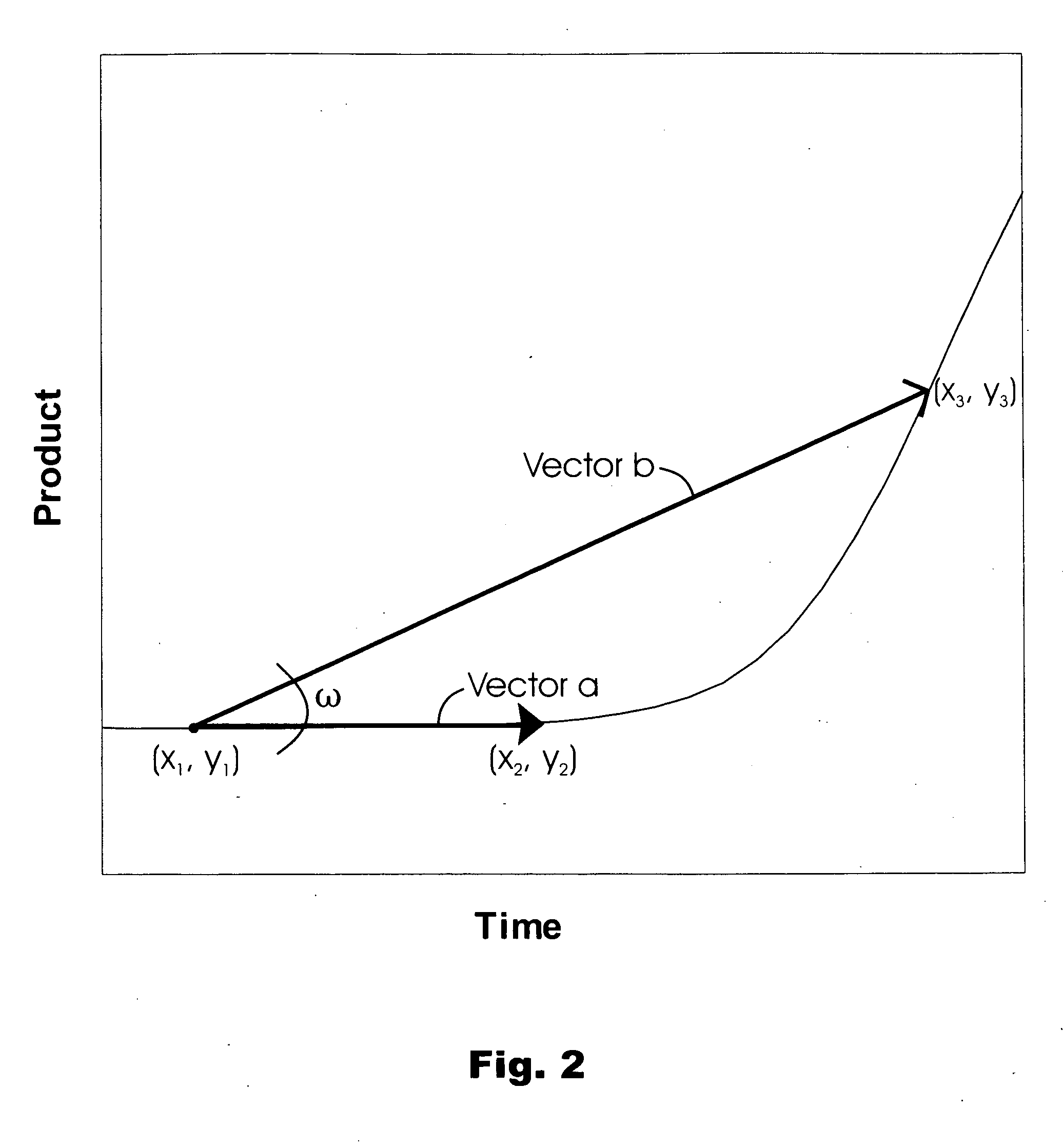Method and algorithm for quantifying polynucleotides
a polynucleotide and quantification algorithm technology, applied in the biochemical field, can solve the problems of uncertainty in the final quantitative result generated by some algorithms, the quantitative ability of some prior methods for analyzing results from real-time nucleic acid amplification reactions is compromised at very low target levels,
- Summary
- Abstract
- Description
- Claims
- Application Information
AI Technical Summary
Benefits of technology
Problems solved by technology
Method used
Image
Examples
example 1
Application of the Vector-Based Analytical Method Using Directionally Similar Vectors
[0111] A series of TMA reactions were performed using from 5×101 to 5×105 copies of an HIV-1 subtype B analyte RNA, and a molecular torch specific for the amplicon. Fluorescence signals indicating amplicon synthesis were monitored as a function of time, and the results plotted on the graph shown in FIG. 7. In this procedure, fluorescence readings indicative of the amount of amplicon present in the amplification reaction mixture were taken every 19.4 seconds, approximately. The result set represented in the figure was processed using the disclosed algorithm employing directionally similar vectors under different conditions of data smoothing.
[0112] The vector-based algorithm employed in these analyses involved establishing paired sets of vectors, with each vector of a set sharing a common origin along the data points represented on a growth curve. The vectors within a set had different x-component m...
example 2
Application of the Vector-Based Analytical Method Using Directionally Opposed Vectors
[0126] A single set of results from time-dependent monitoring of nucleic acid amplification reactions were processed in parallel using a computer running a program to execute independent algorithms employing directionally similar vectors, or directionally opposed vectors. TMA reactions that amplified an HIV-1 analyte polynucleotides were carried out using analyte polynucleotide amounts that ranged from 0-5×105 copies / reaction. All reactions included a fluorescently labeled molecular torch hybridization probe specific for the HIV-1 amplicon. Fluorescence readings indicating the amounts of amplicon present in the reactions were recorded every 19.4 seconds, approximately. The numerical results from the amplification reactions were processed for smoothing by a four-point curve fit using the above-described Model A (equation (3)). Initial estimates for the different variables are given above in connecti...
PUM
| Property | Measurement | Unit |
|---|---|---|
| Time | aaaaa | aaaaa |
| Time | aaaaa | aaaaa |
| Time | aaaaa | aaaaa |
Abstract
Description
Claims
Application Information
 Login to View More
Login to View More - R&D
- Intellectual Property
- Life Sciences
- Materials
- Tech Scout
- Unparalleled Data Quality
- Higher Quality Content
- 60% Fewer Hallucinations
Browse by: Latest US Patents, China's latest patents, Technical Efficacy Thesaurus, Application Domain, Technology Topic, Popular Technical Reports.
© 2025 PatSnap. All rights reserved.Legal|Privacy policy|Modern Slavery Act Transparency Statement|Sitemap|About US| Contact US: help@patsnap.com



